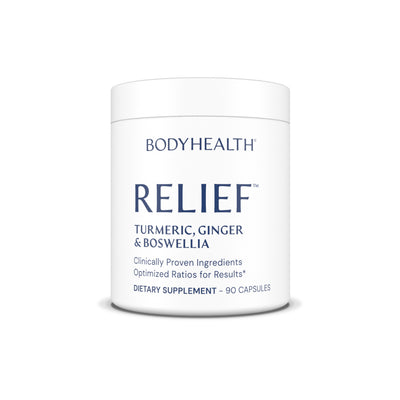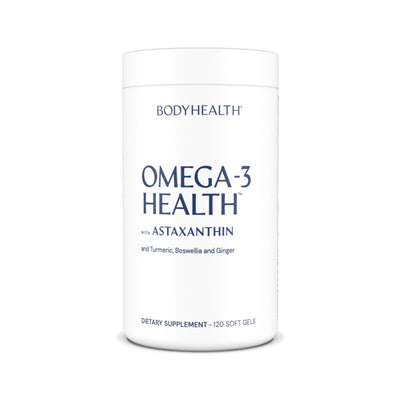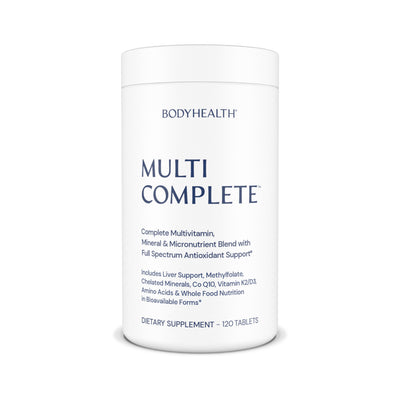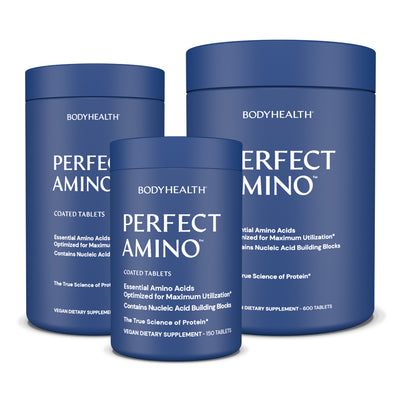Cortisol: The Hormone That Makes Fat Loss Nearly Impossible
January 25, 2024 5 min read

If you’ve ever had a shock and felt the adrenaline surge in your body, then you’ve felt cortisol. It’s a wake-you-up, get-you-ready-for-action hormone.
It hits its lowest point around midnight, so you can go to sleep, and then peaks again about an hour after you’ve gotten up in the morning, getting you to wake up and get ready for the day.
It’s nick-named the “stress hormone” because it’s released in moments of stress. So in a dangerous situation, or if you get scared suddenly, you’ll feel it.
But… when we have too-high levels of cortisol for too long, it can make us feel stressed… even if we have no reason to be.
It’s these too-high levels that are bad. They can make us depressed, anxious, or angry for no reason, make us want to eat more (especially sugary foods), cause us to lose muscle, and throw off our other hormones.
And it makes Fat Loss nearly impossible.
Let’s see how this works.
HOW CORTISOL WORKS IN THE BODY
First, high cortisol makes it hard to get good sleep, which we need in order to build muscle and lose fat, as well as just for our sanity.
Also, if we didn’t get enough sleep because of high cortisol, guess what our body gives us to help us through our sleep-deprived day… more cortisol!
At the same time, it lowers serotonin and GABA levels, the “happy” and “calming” neurotransmitters that help us to relax, calm ourselves and go to sleep at night.
This can make us feel anxious or depressed or angry, even if awe have no reason to feel that way at the time. And it makes it much harder to relax into deep sleep.
There have even been studies done on kids on high sugar diets vs those on whole foods. The kids on the high sugar diets were more aggressive and angry in general as compared to the calmer demeanors of kids eating real foods.
But also, most of our muscle repair and fat-burning is done in the first few hours of sleep. So if we have high cortisol levels at night, then not only do we get poor sleep, we lose this night time fat-burn and cellular repair.
You see, Cortisol is supposed to be at its lowest at around midnight. This is because this is one of the main times we get spikes in both Growth Hormone, for muscle building and cellular repair (recovery), and IGF, Insulin-like Growth Factor, one of the major fat-burning hormones.
But if your Cortisol levels are raised at night, well, Cortisol suppresses growth hormone, testosterone and IGF, thus preventing or lessening recovery and fat loss during the night.
You see, Cortisol sends messages to not use glycogen for energy (your stored chains of sugar), to not use body fat for energy, and instead… to use your muscle as a source of energy, breaking down the protein into amino acids and having these converted to glucose for energy.
So if Cortisol is raised at night, say goodbye to not only a good night’s sleep (lowered serotonin and GABA), but night time fat-burning and muscle gain as well (suppressed growth hormone and IGF).
And it also works with Ghrelin, the appetite-increasing hormone, to increase cravings, particularly for high sugar foods for fast energy.
Don’t get me wrong. If you were in a war, running to safety from enemy bullets with a half-broken leg, it’s cortisol that’s making that possible.
The only thing is… we’re not running from bullets on a daily basis. We’re generally sitting at a desk. And while our boss may stress us out… it’s just not quite the same.
Look at how this would work:
We eat sugary foods before bed, which raises insulin and fat storage on their own, but also cortisol. This makes it harder to get refreshing deep sleep because we’ve also lowered GABA and serotonin. So we lose the fat burning potential of sleep. And then, because we’re tired, we get more cortisol to get us through the day that tells us to eat more sugary food for energy, thus raising insulin and cortisol again to create more body fat, but also lowering serotonin and GABA again so we get bad sleep again.
It can lead to a gradually worsening situation where we add body fat, have trouble losing it, feel stressed more often, have trouble relaxing, and have low energy.
But this isn’t how it’s supposed to work. Cortisol is supposed to be very short lasting and only come out a few times a day. It has exact duties and that’s it.
It’s only when it gets too high for too long that it really causes trouble and makes losing fat, building muscle, and maintaining a generally even mood difficult.
SO WHAT RAISES CORTISOL AND HOW DO WE LOWER IT?
Outside of actually stressful situations? Processed sugars, trans fats, high levels of Omega 6 fatty acids (which are in high levels in all of our processed foods), environmental toxins, and injuries, infection, or partially digested proteins.
But processed sugars like high fructose corn syrup from sodas and junk food raise Cortisol levels more than almost anything else.
In fact, as covered in this article, we see that obesity rates have quadrupled since the introduction of this sugar in the 1970’s.
So if we have high levels of sugar before bed, night after night, and processed foods during the day, we’ll have a pretty hard time getting good sleep, burning fat, or building muscle due to the cortisol released each time.
From there, the lack of sleep itself brings further release of cortisol to keep you awake the next day, and more cravings for processed sugar for fast energy, which releases more cortisol, back and forth, all the while working alongside its best buddy, insulin, to increase fat storage and depress energy levels, muscle gains and mood.
There is more to this: Omega 6 fatty acids in our diets is another huge factor, along with trans fats and toxins in our food and water. But we’ll cover those in upcoming articles.
For now, one of the fastest, best ways to lower cortisol, increase fat burning, get better sleep, raise mood, and increase overall health is coming off processed sugars of any kind.
They really do make that much of a difference.
And if you’re doing the 30-Day Fat Loss Challenge, then you’re doing that now, and by week three should be seeing and feeling a significant difference.
Alright, message us in the Group if you have any questions or need anything. And you can also share your progress there and see others' progress.
And on the Diet & Protocol page you'll find a code you can use to purchase any missing items you may need, and you can save at least 15% when purchasing a 30-Day Fat Loss Challenge Package.
And if you haven't seen the Guide To Sustainable Fat Loss & 30-Day Challenge, check them out.
INDEX TO THE GUIDE TO SUSTAINABLE FAT LOSS:
Introduction & Getting Started:
- Introduction To Sustainable Fat Loss & The 30-Day Challenge
- The Key To Sustainable Fat Loss: Calories + Hormones
- The 30-Day Fat Loss Challenge: Diet & Protocol
- The 30-Day Fat Loss Challenge: Workout
Week One:
- The 30-Day Fat Loss Challenge Starts: Running Your Diet The Right Way
- Body Fat Is Made From Sugar — Not Fat
- Reversing Insulin Resistance & Speeding Fat Loss
Week Two:
- What's Causing Cravings For Sugar & Junk Food
- Digestion Is Key To Sustainable Fat Loss
- Cortisol: The Hormone That Makes Fat Loss Nearly Impossible
Week Three:
- How Poor Sleep Prevents Fat Loss
- Estrogen Dominance Prevents Fat Loss In Women & Men
- Raising Growth Hormone & IGF For Fat Loss
Week Four:
- Hunger Vs Cravings: When To Transition Out Of Fat Loss
- Transitioning From Fat Loss To Lean Body
- How Our Corn & Soy Based Diet Prevents Fat Loss
Week Five:
Articles by Health Topic
Your Path To Better Health Starts Here!
From in-depth articles on nutritional benefits to updates on new product launches, stay informed and inspired on your journey to optimal health.
*These statements have not been evaluated by the Food and Drug Administration. These products are not intended to diagnose, treat, cure, or prevent any disease.








